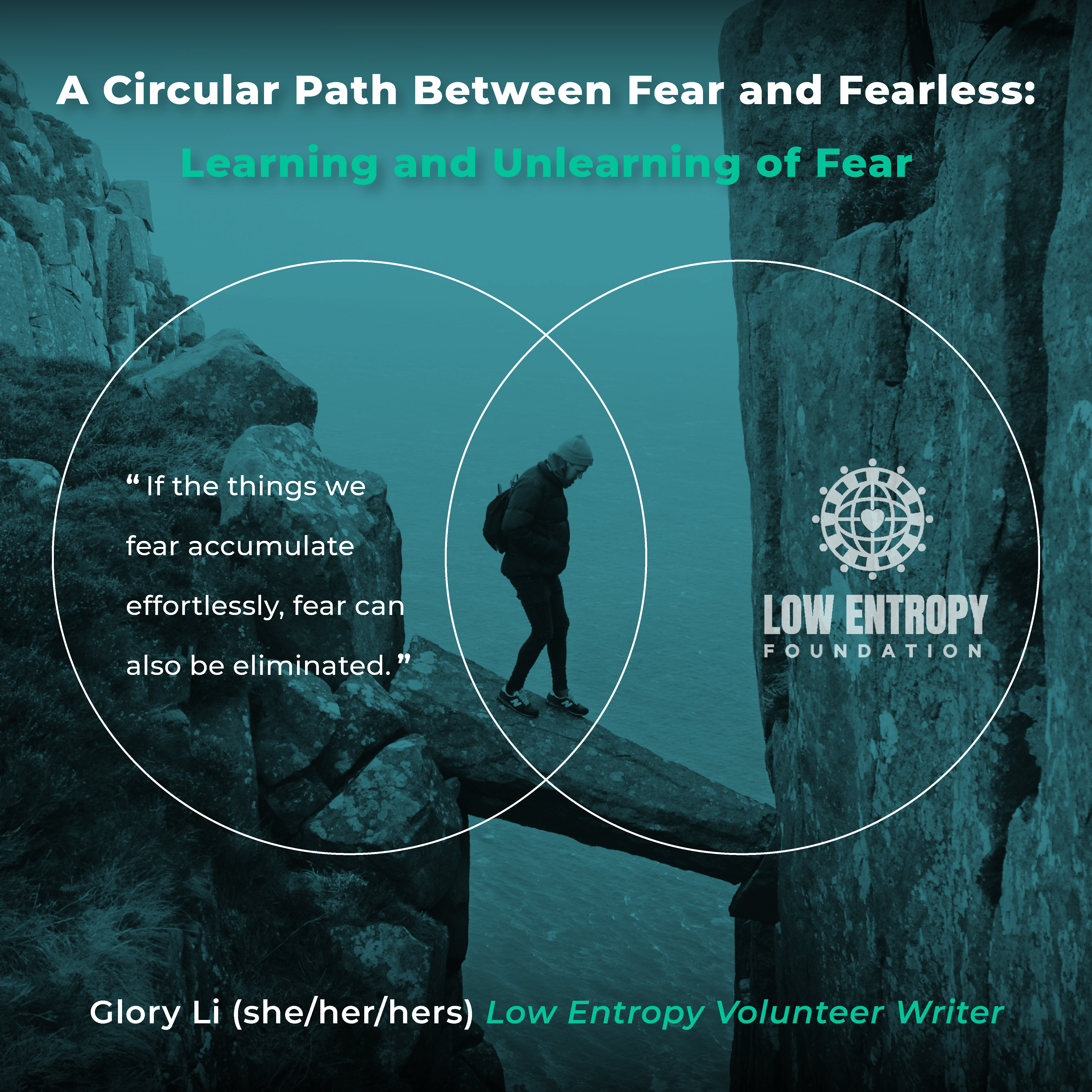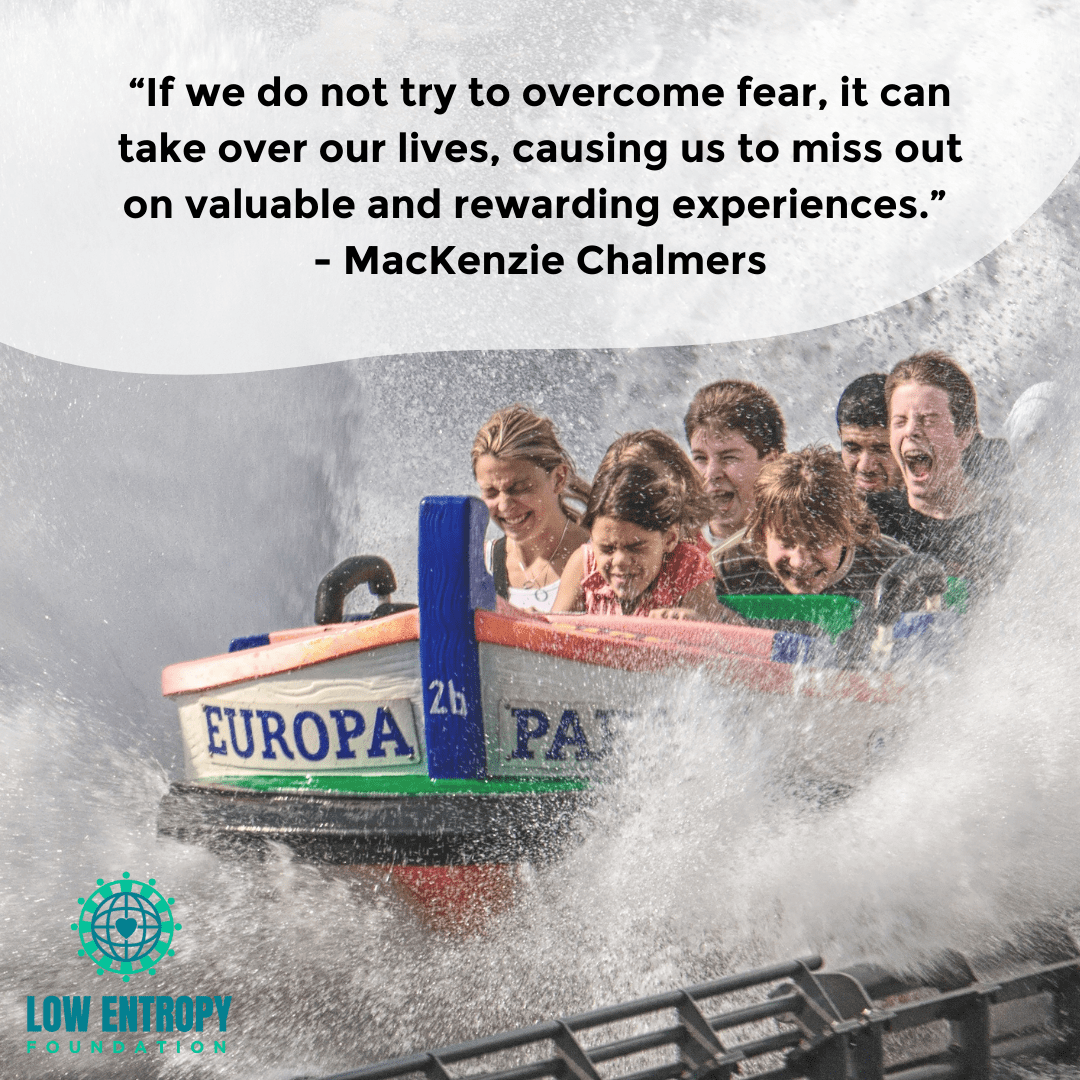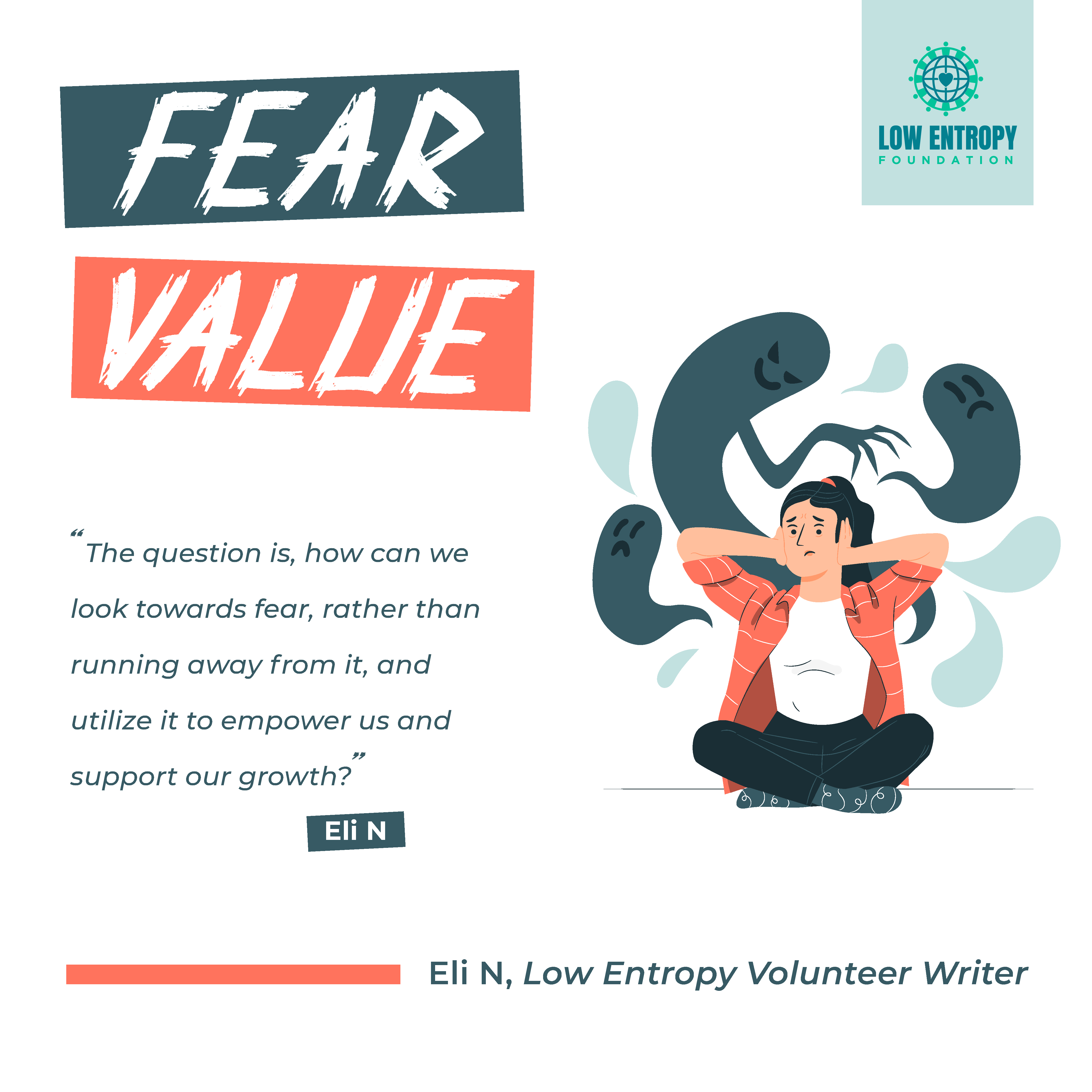A Circular Path Between Fear and Fearless: Learning and Unlearning of Fear
October 20, 2023

Glory Li (she/her/hers), Low Entropy Volunteer Writer
When you think back to your childhood, memories were bombarded with colours of adventure and exploration. Seldomly, your young self may consider the concept of fear that’s constantly being brought up in a gloomy conversation between your parents. We all have the feeling that our advancing years are growing proportionally with a blinding tapestry of fear to the point where danger seems to lurk around every corner. These experiences prove our older selves are constantly learning to fear and forgetting previous fears to survive in this complicated world [1].
How Do We Learn New Fears?
To illustrate the flexible management of fear, it was discovered that new fears can be deliberately induced in creatures that normally won’t or previously didn’t fear, known as fear conditioning[2]. This experimental procedure involves a conditioned stimulus (CS) which is something naturally unscary, like a white noise soundtrack. It served as an attention divider to help the participant relax and get used to the environment. Then the unconditioned stimulus (US) was something abnormal or scary, like a mild electric shock. It will be played together with the CS until the participant gets fearful just by learning the CS alone because it was involuntarily assumed to be a precursor or warning to the scary part.
Additionally, observational learning of fear has revealed that fear can arise only with observation, such as edginess learned on a social level without personally getting exposed to it. Research led by Susan Mineka and Michael Cook set this theory into practice[3]. They tested several monkey infants by giving them realistic toys of snakes who had never seen the real version, so at first they played with the duplications with interest. Later, the monkeys watched a video clip of elderly monkeys shrinking back from a cobra in the wild. It produced a classic fear response to the baby monkeys when they were once again left with the toy snakes that they could no longer stand the fear of snakes after merely a five-minute visual representation.
How Do We Learn to Forget Fear?
If the things we fear accumulate effortlessly, fear can also be eliminated. In a fear conditioning experiment, if the conditioned stimulus appeared repeatedly without the scary stimulus, the fear response would gradually decrease and disappear. This “forgetting” approach is called extinction, in which the fear memory isn’t erased from the brain but is overlaid with newer, safe memories. However, once the same dangerous signal recovers, the fear response activates again.
Reconsolidation is new information that could be added to these memories within the open window of six hours immediately after the exposure[4]. Just like memorization, there’s a natural fragility when unstable memories are recently formed: it is prone to “optimization” that allows people to reduce fear intensity by adding traces of non-scary consolations. After the nascent memories consolidate, fear memories take longer to interrupt because neuron functions and chemical modification favor the information to be remembered.
Another method capable of suppressing fear response is by strengthening the emotional centers of the brain. The prefrontal cortex (PFC) is a region of your brain for decision-making, emotional expression, and behavioral regulation and it’s directly connected with the amygdala for inhibitory reasons. In an experiment, Dr. Ahmad Hariri realized that using words to label emotional thoughts can help PFC activity[5]. He divided volunteers into two groups, the first group was asked to match fearful pictures with another targeted picture which forced them to concentrate on the perceptual aspect of the image, so the amygdala was alarmed the entire time. Meanwhile, the second group was required to match the same pictures to words describing the negative scene instead, which forced all the members to analyze the circumstance linguistically which greatly controlled the emotional impulse.
Although some of us have a tendency to focus and gather fears more than others, it’s important to recognize that the processing of our fear system is extremely malleable. Practically, people can seek treatments like attentional probe tasks and cognitive behavioral therapy for changing dysfunctional patterns of brain reactivity, or habitual interventions like mindfulness-based stress reduction. The brain’s adaptability highlights each and everyone’s capability to reshape our response in fear-activating scenarios. Knowing that we can learn, change, and overcome our fears provides us the hope to revisit the joyful, untroubled days of our youth.
Work Cited
[1]Fox, Elaine. Rainy Brain, Sunny Brain: The New Science of Fear and Optimism. Collins, 2012.
[2]“Fear Conditioning.” Behavioral and Functional Neuroscience Laboratory, med.stanford.edu/ sbfnl/services/bm/lm/bml-fear.html#:~:text=Fear%20Conditioning%20(FC).
[3]Cook, M., & Mineka, S. (1989). Observational conditioning of fear to fear-relevant versus fear-irrelevant stimuli in rhesus monkeys. Journal of Abnormal Psychology, 98(4), 448–459
[4]“Interaction Between Reconsolidation and Extinction of Fear Memory – PubMed.” PubMed, 1 Apr. 2023, https://doi.org/10.1016/j.brainresbull.2023.02.009.
[5]“Neocortical Modulation of the Amygdala Response to Fearful Stimuli – PubMed.” PubMed, 15 Mar. 2003, https://doi.org/10.1016/s0006-3223(02)01786-9.
—
Leave your thoughts for Glory in the comments below. You can also follow us on Facebook, Instagram, TikTok, Twitter and YouTube to stay up-to-date with Low Entropy news!
GET INVOLVED
At Low Entropy, we believe changing the world starts with changing ourselves.
Founded in 2015, Low Entropy Facilitates conversations that encourage diversity and promote inclusivity.
We understand that life can be confusing at times. It can seem challenging and sometimes you may feel like no one really “gets you.” We offer an opportunity to connect with others who have the capacity to understand you.









